Are you ready for a long one? This will have separate postings due to length. The next 60 pix details our experience of coming into a type of car we may have never had much interest in, except that events brought it along…we decided we liked it…eventually I went to modify it up a little and learned something new.
We were not looking for a Jeep Cherokee in 2005…one sorta came to us. A friend had it as a project to flip, putting a junkyard motor and fresh paint on a 1992, but he couldn’t finish it due to a move. He told me to take it…we’d like it…for a couple thousand bucks, pay him later. To me, it wasn’t the “real” Jeep and Gail just made a face, but with a couple more minor repairs and a new set of tires the old Chero was a great beater. We could take it anywhere, carry most anything, and leave it parked downtown all day without a care. A few trips to the mountains and desert, going places where we never could with the other cars, soon had it becoming regular transportation.
Deficiencies did show up when we tried something different and started going out with some of the more hard-core off-roaders around town. Places I normally would consider only for hiking were easy roads for these people. We bashed the suspension and sheetmetal on rocks and the tires slipped and slid on hills. We had fun and made going out with them a regular activity, but always had to pass on the more challenging trails.
While I have a couple of old “full-size” Jeeps stored in back, including both a ’63 first-year Willys-tagged J-10 pickup and Wagoneer, I had never had any experience with a Cherokee. If you think of it, they are a bit like the original Jeep…small, light, inexpensive. They do not use heavy driveline components and are not built for towing. They are reliable to 200k miles and get decent mpg depending on transmission and use. They don’t look like much in stock form and start with little in the way of features, but are simple and versatile and for off-road have the basics such as a two-speed transfer case and a decent set of live axles. If you want to go to rougher places they are easy to modify for the purpose, installing a little lift via aftermarket springs and shocks, bigger tires and cheapo lockers will put you in a different world . Continued modification gets more expensive but like anything else you pay for how you want to play. Most guys keep it low-cost and enjoy what is perhaps one of the biggest advantages of an older vehicle they made millions of…you can thrash away on it and if roll it or wreck it, you just get another body and transfer your parts over. That for our purposes makes a common old Cherokee a good idea.
For a while I worked on a second more-capable Cherokee project, while keeping the first one stock. I started a custom front axle and made some other parts, but I didn’t really have the time to spend (nor really need two Cherokees) and progress stopped after a short while.
So things remained, but after seven years of commuting and weekend duty the already-high-mileage first Chero was getting tired. By the beginning of 2013 reliability was starting to suffer and it was time to do something. The second one had the parts I’d built but while sitting the registration had become overdue by probably a thousand bucks…the first one was current and aside from mechanicals was still in good condition, even with over 300,000 miles on the body. Why not gather up the best of each and put together a single car that would serve as good transportation but handle the tougher trails as well?
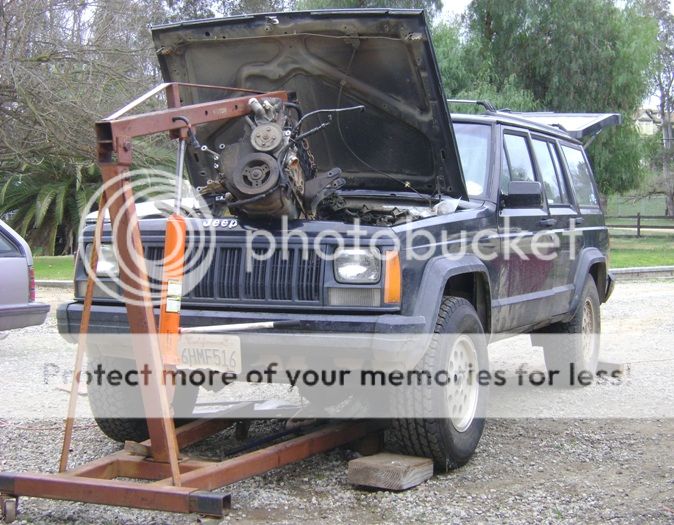
This was not the original engine for our car and I had no idea how many miles are on it besides, “a lot”. It passed its’ last smog test but didn’t make much power and showed considerable timing chain stretch. It wouldn’t run under 220 degrees in the coolest weather.
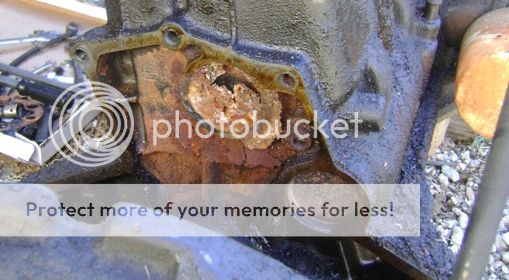
It leaked a little water from the day we got it so we never bothered with the expense of anti-freeze or rust inhibitor which of-course only encouraged more leaks. I’d changed accessable freeze plus once but could do nothing with a rear one covered by the trans housing. Here it is finally out in the light; it’s almost completely gone, leaving just a bunch of oxidized fluff there. An aluminum plate between the block and trans was the only thing holding water in thanks to the machined block surface around the plug being at the same level, and that was almost rotted through as well.

The driver-side motor mount lived under a steady bath of leaked power-steering fluid and was shot, the pass side was only a little better. Hoses, connections and gaskets were rotten and leaking everywhere. Really, it’s amazing how well the ol’ Cherokee was doing, we had still been using it every day.

With the weight off the front of the car it was a good time to pull the original Dana 30 axle out. With crazy miles on it, there was a small leak from the driver side tube seal and the lower left control arm bracket had been damaged in the desert.
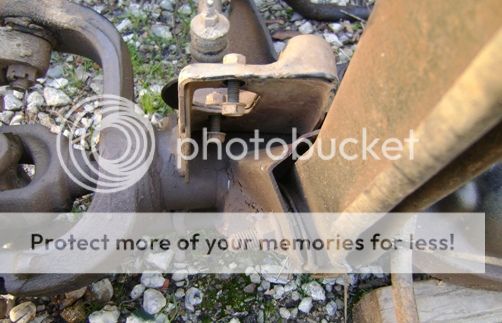
Another recent mishap had finished the same damaged bracket off making the car no longer drivable.
We were not looking for a Jeep Cherokee in 2005…one sorta came to us. A friend had it as a project to flip, putting a junkyard motor and fresh paint on a 1992, but he couldn’t finish it due to a move. He told me to take it…we’d like it…for a couple thousand bucks, pay him later. To me, it wasn’t the “real” Jeep and Gail just made a face, but with a couple more minor repairs and a new set of tires the old Chero was a great beater. We could take it anywhere, carry most anything, and leave it parked downtown all day without a care. A few trips to the mountains and desert, going places where we never could with the other cars, soon had it becoming regular transportation.
Deficiencies did show up when we tried something different and started going out with some of the more hard-core off-roaders around town. Places I normally would consider only for hiking were easy roads for these people. We bashed the suspension and sheetmetal on rocks and the tires slipped and slid on hills. We had fun and made going out with them a regular activity, but always had to pass on the more challenging trails.
While I have a couple of old “full-size” Jeeps stored in back, including both a ’63 first-year Willys-tagged J-10 pickup and Wagoneer, I had never had any experience with a Cherokee. If you think of it, they are a bit like the original Jeep…small, light, inexpensive. They do not use heavy driveline components and are not built for towing. They are reliable to 200k miles and get decent mpg depending on transmission and use. They don’t look like much in stock form and start with little in the way of features, but are simple and versatile and for off-road have the basics such as a two-speed transfer case and a decent set of live axles. If you want to go to rougher places they are easy to modify for the purpose, installing a little lift via aftermarket springs and shocks, bigger tires and cheapo lockers will put you in a different world . Continued modification gets more expensive but like anything else you pay for how you want to play. Most guys keep it low-cost and enjoy what is perhaps one of the biggest advantages of an older vehicle they made millions of…you can thrash away on it and if roll it or wreck it, you just get another body and transfer your parts over. That for our purposes makes a common old Cherokee a good idea.
For a while I worked on a second more-capable Cherokee project, while keeping the first one stock. I started a custom front axle and made some other parts, but I didn’t really have the time to spend (nor really need two Cherokees) and progress stopped after a short while.
So things remained, but after seven years of commuting and weekend duty the already-high-mileage first Chero was getting tired. By the beginning of 2013 reliability was starting to suffer and it was time to do something. The second one had the parts I’d built but while sitting the registration had become overdue by probably a thousand bucks…the first one was current and aside from mechanicals was still in good condition, even with over 300,000 miles on the body. Why not gather up the best of each and put together a single car that would serve as good transportation but handle the tougher trails as well?

This was not the original engine for our car and I had no idea how many miles are on it besides, “a lot”. It passed its’ last smog test but didn’t make much power and showed considerable timing chain stretch. It wouldn’t run under 220 degrees in the coolest weather.

It leaked a little water from the day we got it so we never bothered with the expense of anti-freeze or rust inhibitor which of-course only encouraged more leaks. I’d changed accessable freeze plus once but could do nothing with a rear one covered by the trans housing. Here it is finally out in the light; it’s almost completely gone, leaving just a bunch of oxidized fluff there. An aluminum plate between the block and trans was the only thing holding water in thanks to the machined block surface around the plug being at the same level, and that was almost rotted through as well.

The driver-side motor mount lived under a steady bath of leaked power-steering fluid and was shot, the pass side was only a little better. Hoses, connections and gaskets were rotten and leaking everywhere. Really, it’s amazing how well the ol’ Cherokee was doing, we had still been using it every day.

With the weight off the front of the car it was a good time to pull the original Dana 30 axle out. With crazy miles on it, there was a small leak from the driver side tube seal and the lower left control arm bracket had been damaged in the desert.

Another recent mishap had finished the same damaged bracket off making the car no longer drivable.
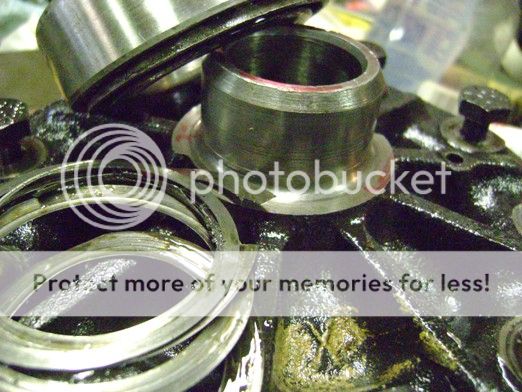

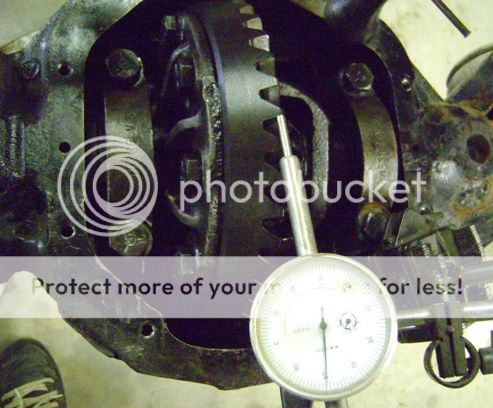

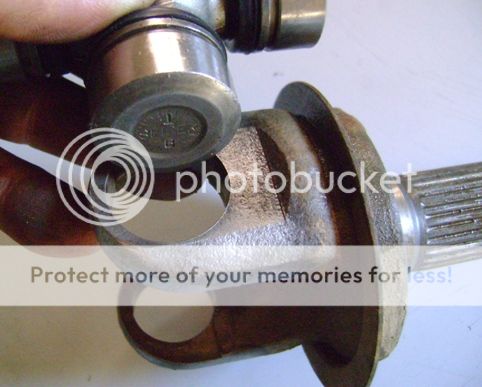

 Stuff like this has got to be annealed down a little, in this case by heating with a gas torch and letting it re-cool, slow. Otherwise you get a mix of brittle and soft spots, and it’s more likely to crack later.
Stuff like this has got to be annealed down a little, in this case by heating with a gas torch and letting it re-cool, slow. Otherwise you get a mix of brittle and soft spots, and it’s more likely to crack later.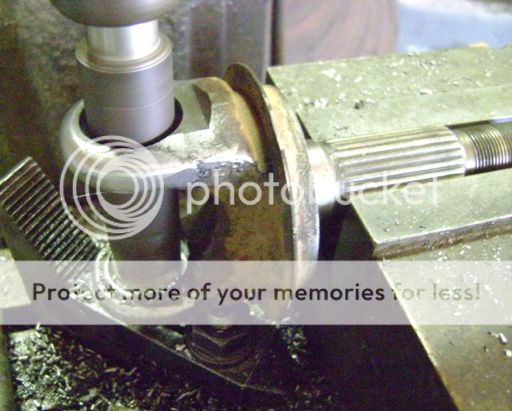
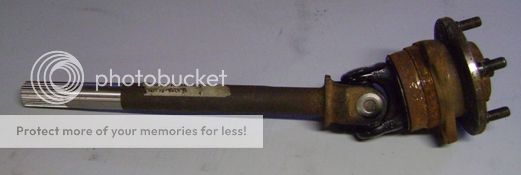
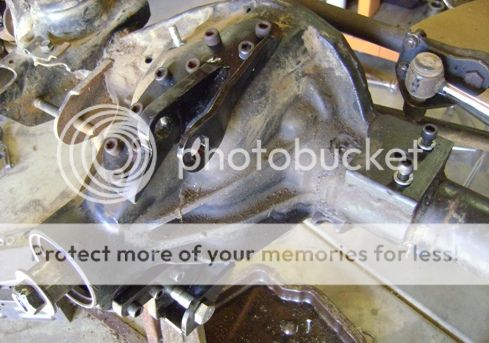

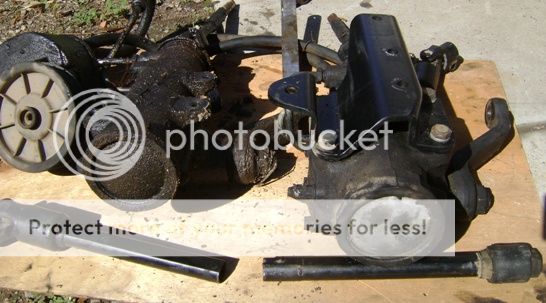

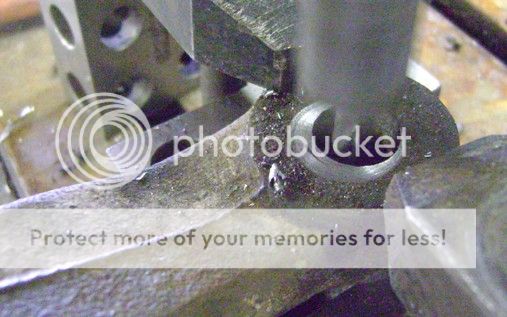

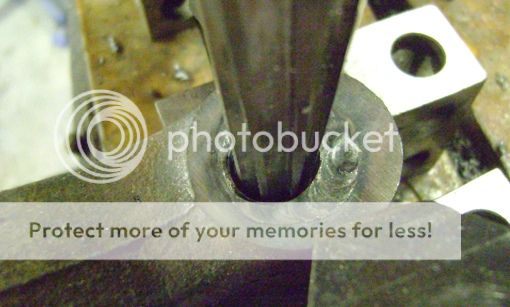





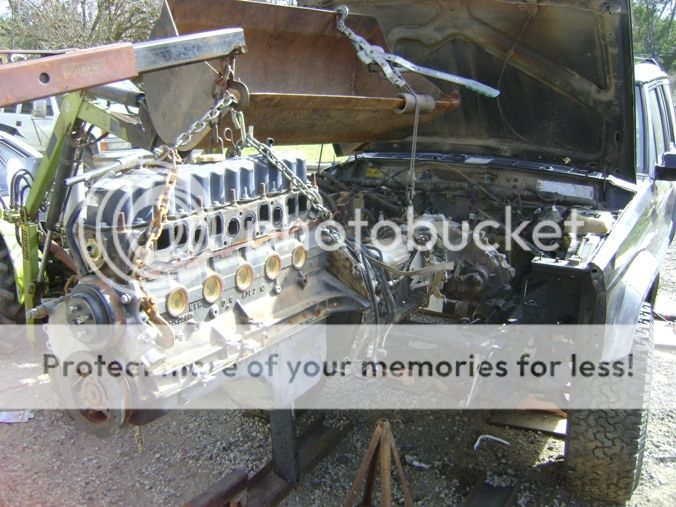
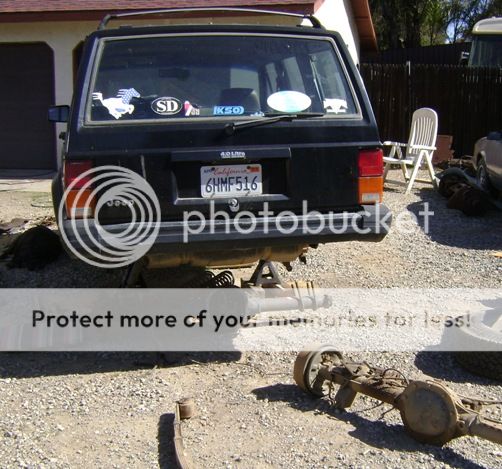
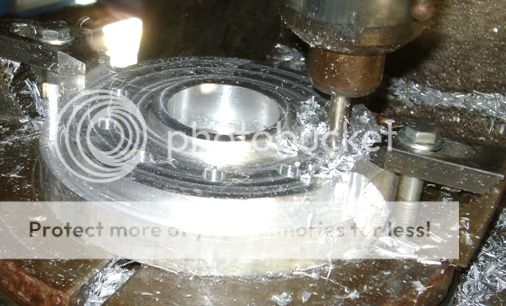
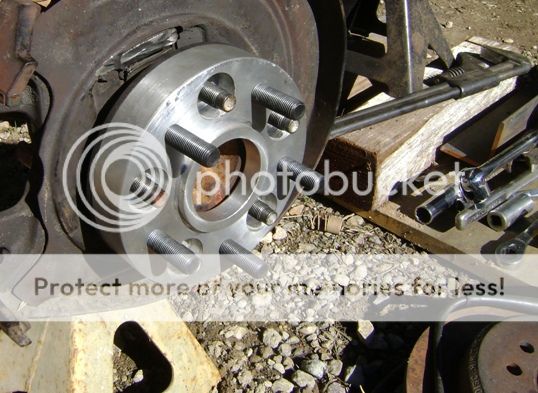
 I found aftermarket weld-on leaf spring pads and used Chevy truck u-bolts and plates, and then chose to fabricate shock mounts. Original mounts hang low and can catch rocks…with the lift we plan to have, re-locating the mounts higher on the axle will keep them out of the way and allow use of stock-length shocks on this lifted vehicle as well. A scrap piece of rect. Tube provided the material…cutting took long enough that I found something to read to pass the time.
I found aftermarket weld-on leaf spring pads and used Chevy truck u-bolts and plates, and then chose to fabricate shock mounts. Original mounts hang low and can catch rocks…with the lift we plan to have, re-locating the mounts higher on the axle will keep them out of the way and allow use of stock-length shocks on this lifted vehicle as well. A scrap piece of rect. Tube provided the material…cutting took long enough that I found something to read to pass the time.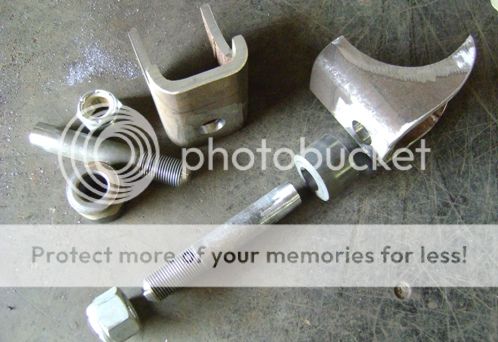
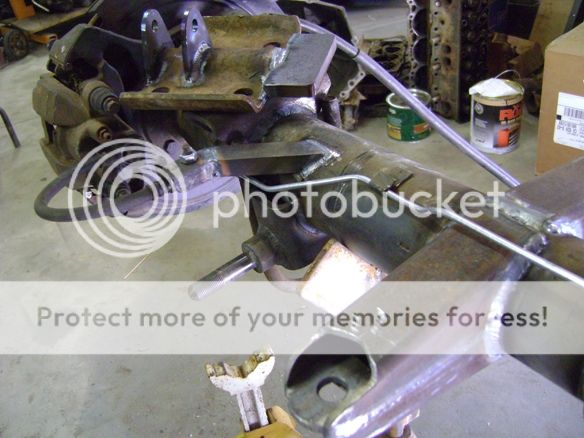
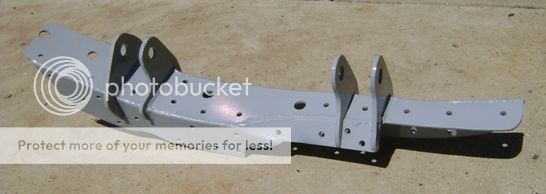
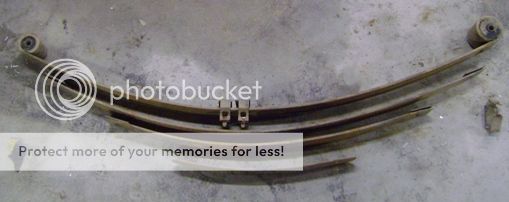
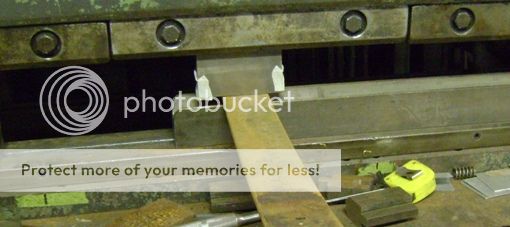

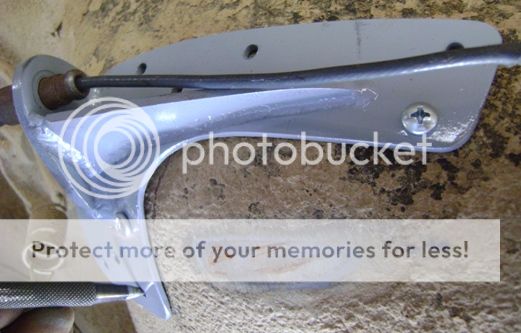
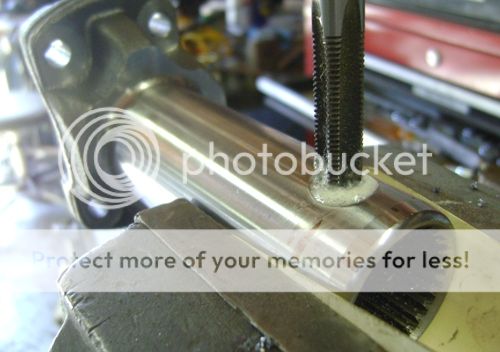
 Then using a lathe, the stock tailshaft housing was sectioned down to position the sleeve bearing in a good place and drilled/tapped in a mill for a pipe plug to provide access to the yoke set screws which go in after the housing.
Then using a lathe, the stock tailshaft housing was sectioned down to position the sleeve bearing in a good place and drilled/tapped in a mill for a pipe plug to provide access to the yoke set screws which go in after the housing.
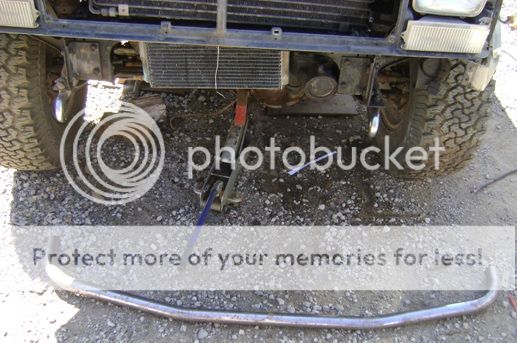
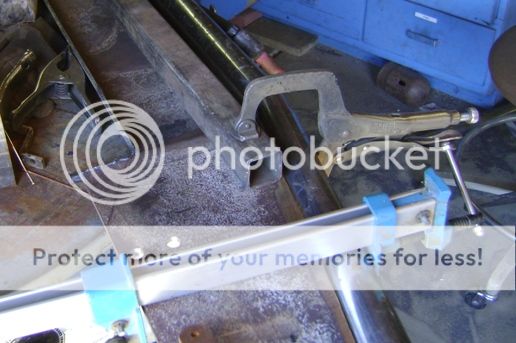
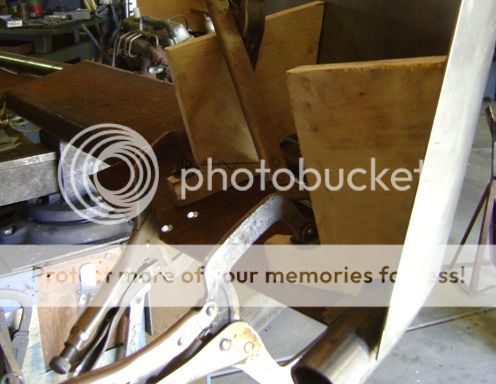

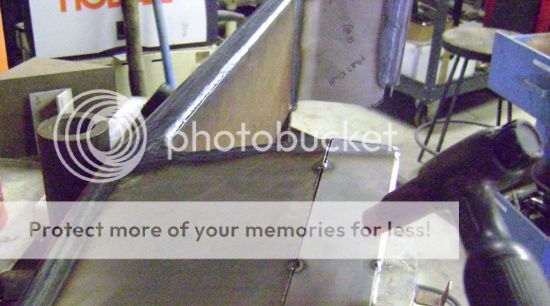
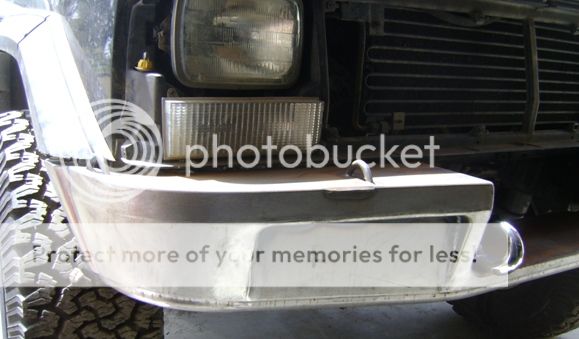
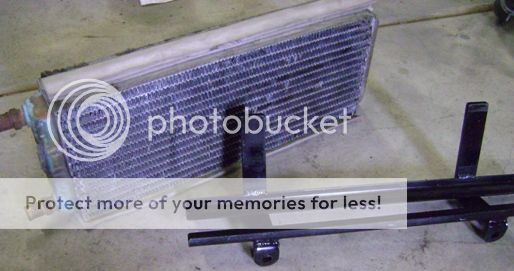
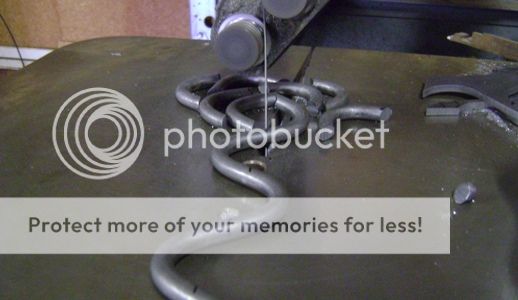
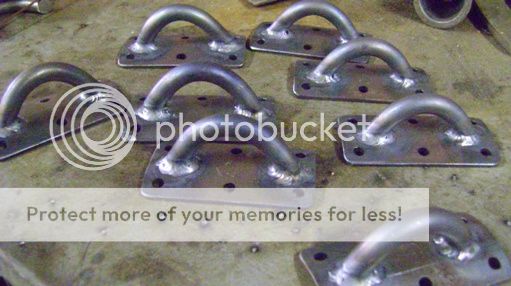
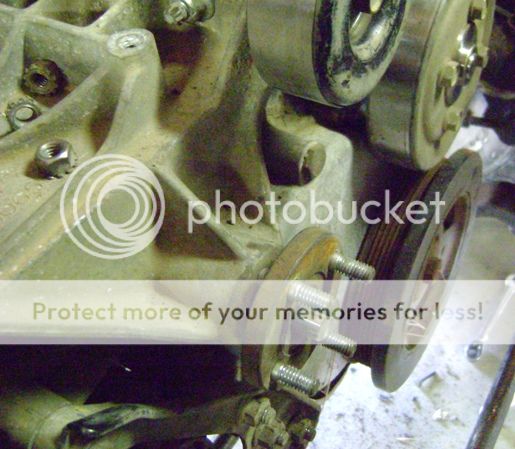

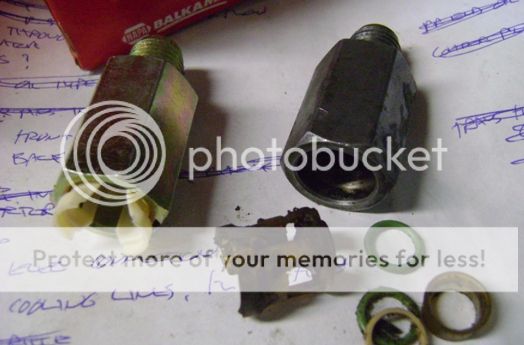


 A better choice was good ‘ol Shoe Goo from K-Mart, which is the reason my old tennies can still be stumbled around in without the front of the sole flapping (do I seem like a cheap b@s%d yet? Hey, part of the fun for me is seeing how inexpensive I can keep it sometimes). With a dab every few inches where that other stuff failed, our headliner is hopefully in there to stay.
A better choice was good ‘ol Shoe Goo from K-Mart, which is the reason my old tennies can still be stumbled around in without the front of the sole flapping (do I seem like a cheap b@s%d yet? Hey, part of the fun for me is seeing how inexpensive I can keep it sometimes). With a dab every few inches where that other stuff failed, our headliner is hopefully in there to stay. 
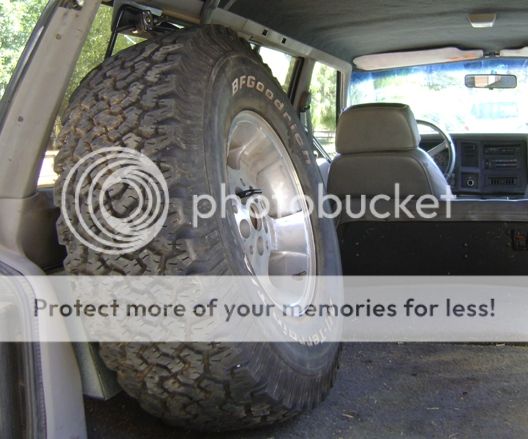
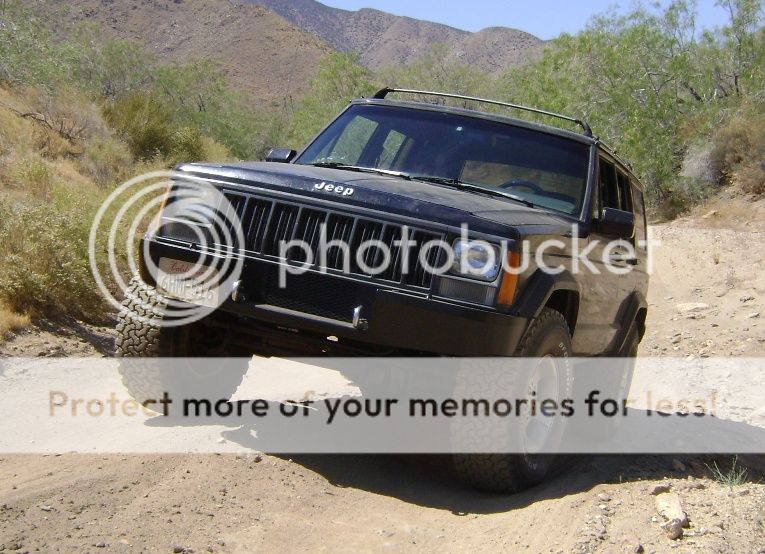


Comment